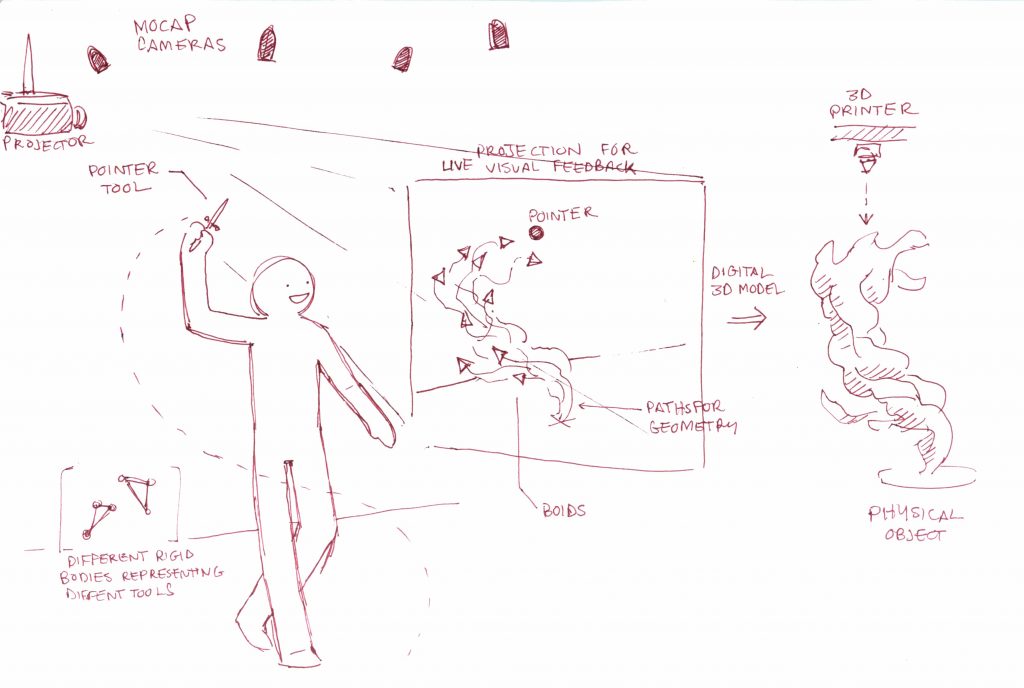Manuel Rodriguez & Jett Vaultz
Agents conductor is a design and fabrication method hybrid between digital and physical worlds. It is a negotiation between two living parts, one physical, one digital. The former refers to a human, the latter, to a set of agents with their own behaviour. Is it possible to tame them?

Design skills combine the ability to direct the set of agents as you will, with some constraints given by a list of rules and digital tools with the creativity of dealing with a dynamic entity that will move around. It will be closer to train a dog rather than getting better at some fabrication skills as sculpting.

In order to follow and understand your own movements with the piece to fabricate, a projector will be necessary, as it will be where the agents live. Through streaming motion capture, the actor’s movement are recorded and projected, having full interaction with the agents.
The degree of manipulation of the behaviour of the agents is to be determined. Nevertheless, a basic setup will consist of number of agents, sped, degree of separation vs cohesion, alignment, repulsion or attraction. These variables are expected to be controlled by a number of different rigid bodies. How to combine those is up to the user.
The resulting geometry is also variable. From a curve made out of all the tracked location of the agents (with variable thickness), to a surface formed by lofting each of the mentioned curves, or more volumetrical bodies made out of shapes associated with the motion of the agents.
The algorithms will be written in Grasshopper Python. Agents behaviours, interaction with the user, resulting geometry and fabrication files.
Fabrication will happen by means of additive manufacturing, being robotic spatial printing the chosen medium. The thickness and degree of fabricability will rely on the development of the tool. Therefore some coding in HAL and Rapid will be necessary at this stage.